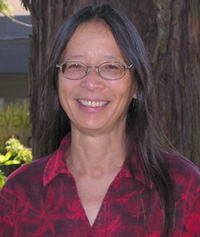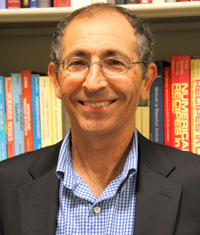Two professors at the University of California, Santa Cruz, have been awarded the distinction of AAAS Fellow by the American Association for the Advancement of Science, the association announced this week. They are Ilan Benjamin, professor and chair of chemistry and biochemistry, and Sandra Chung, professor of linguistics.
Chung was honored "for distinguished contributions to teaching and research in linguistics, advancing syntax through insights from under-studied languages, notably Chamorro, and engaging minority communities in linguistic research."
Chung is a leading authority on Austronesian languages, especially Chamorro, a language spoken by 45,000 people in the unincorporated U.S. territory of Guam and in the U.S. commonwealth of the Northern Mariana Islands. In 2008, she was awarded a grant from the National Science Foundation for a three-year collaborative project to help preserve the endangered Chamorro language. Since joining UCSC in 1986, she has served as chair of the Linguistics Department, chair of the Philosophy Department, and chair of the Committee on Academic Personnel. In 2011, she was elected as president of the Linguistic Society of America (LSA)--the major professional society in the United States that is dedicated to the scientific study of language.
Much of Chung’s recent research has focused on the interface of syntax and semantics, including a collaborative project with UCSC professor of linguistics and dean of humanities William A. Ladusaw.
Benjamin was recognized "for distinguished contributions to the field of computational and theoretical chemistry, particularly for theoretical advances in the understanding of molecular features at liquid interfaces."
His research is focused on the theoretical study of chemical and physical phenomena that take place at liquid surfaces and interfaces. This work is motivated in part by the fact that many phenomena of importance in science and technology take place at the interface between a liquid and another phase. Examples include the uptake of pollutants at the interface between air and water, extraction of ions at the interface between water and oil, and the water-splitting reaction (electrolysis) at the interface between water and an electrode. The liquid surface is an inhomogeneous environment where asymmetry in the forces between molecules produces unique molecular structures and dynamics, and the lack of spherical symmetry makes the theoretical modeling particularly challenging.
Benjamin's lab uses a variety of computer simulation methods in combination with experimental techniques such as time-resolved spectroscopy and x-ray reflectivity to study these phenomena.
This year, 702 AAAS members have been honored as fellows because of their scientifically or socially distinguished efforts to advance science or its applications. New fellows will be presented with an official certificate and a rosette pin on Saturday, February 16, at the AAAS Fellows Forum during the 2013 AAAS Annual Meeting in Boston, Mass.
The American Association for the Advancement of Science (AAAS) is the world's largest general scientific society and publisher of the journal Science, which has the largest paid circulation of any peer-reviewed general science journal in the world, with an estimated total readership of 1 million. AAAS was founded in 1848, and includes 261 affiliated societies and academies of science, serving 10 million individuals. The non-profit AAAS is open to all and fulfills its mission to "advance science and serve society" through initiatives in science policy, international programs, science education, and more.




